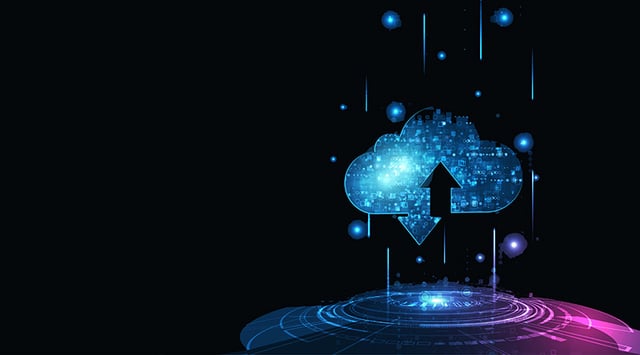

Cloud Networking Services Comparison
In this guide, we will delve into what you should know about two of the best cloud networking services on the market: Citrix AD and Akamai.


Cloud networking is a significant part of many organizations’s digital infrastructure. Connecting to the cloud saves time, increases accessibility, and streamlines complicated IT processes. With increased transparency and collaboration within cloud computing, cloud networking is driving innovation.
Cloud computing can be broken down into three basic models; software-as-a-service, platform-as-a-service, and infrastructure-as-a-service. Networking has always been an important aspect of computer infrastructure, and is even more so with the rise of cloud computing. Cloud networking services provide a scalable, accessible, and secure customer engagement platform. However, before choosing one, you should know that there is no “one size fits all” solution. Each service provider has its own strengths, weaknesses, and specialties. To make an educated decision between the two heavyweights in the cloud networking world: Citrix and Akamai, we’re going to compare the overall offerings of these solutions.
Also read: Cloud Networking Services Comparison: Arista vs. Dell Cloud
Over time Citrix has grown significantly and is now a major contender in providing virtualization, mobile, and enterprise cloud services. Since 1989, Citrix has grown from a developer of re-implementation of Microsoft Windows platforms into a powerhouse technology company pushing the boundaries of IaaS cloud computing. Citrix Systems Inc. provides server, application, and desktop virtualization technologies as well as cloud computing services. There are approximately 400,000 Citrix users globally, including 99 percent of Fortune 100 companies and 98 percent of Fortune 500 companies. The company has an extensive product line that caters to multiple enterprises.
| Pros | Cons |
| Multiple levels of protection | License is quite costly |
| A simple online portal login is all that is required. | A high-level skill set is required for implementation and setup |
| Maintenance and expansion of settings for business requirements are simple. | Setting it up and maintaining it is time-consuming due to the number of moving parts. |
| Improves user acceptability by integrating effectively with contemporary apps to provide optimal user experiences similar to native applications | |
| Effective support when there is an issue. | |
| Allows remote access to any device from anywhere, eliminating the need to manage endpoints as a typical VPN would. | |
| Flexibility in applying policies to diverse use cases such that relevant security mitigations are in place with little effort |
In 1998, a group of MIT students created Akamai, one of the first content delivery network (CDN) providers. Now one of the world’s largest CDN providers, Akamai features an intelligent cloud computing architecture built on top of 200,000 servers in about 110 countries. The company helps customers build, preserve and extend their digital presence with solutions that provide performance and security for connected devices as well as delivers, optimizes and secures online content and business applications.
| Pros | Cons |
| Application-layer cyberattacks are protected by a proprietary WAF. | Akamai’s massive CDN structure makes it difficult for security rules to transmit promptly. |
| The use of rate limitation technologies helps to manage traffic segments based on their request rate. | It takes a little longer setup |
| It’s possible to add 2.3TB of bandwidth devoted to DDoS attack absorption with Prolexic’s PLXedge. | The website is said to be difficult to navigate. |
| In the globe, Akamai has the most Points of Presence. | There is no pricing information available. |
| Highly adaptable, you may change the ways to suit your needs. |
While each platform is powerful, there are fundamental differences:
| Features | Akamai | Citrix |
| Performance Scale | ✔ | ✔ |
| Deployment Flexibility | ✔ | |
| Deployment Elasticity | ✔ | |
| Pricing Flexibility | ✔ | |
| Ability to Understand Needs | ✔ | |
| Software Accessibility | ✔ | |
| Quality of End-User Training | ✔ | |
| Timeliness of Vendor Response | ✔ | |
| Ease of Integration using Standard APIs and Tools | ✔ | |
| Core ADC functionality | ✔ | |
| Advanced ADC Functionality | ✔ | |
| Overall Capability Score | ✔ |
Citrix offers strong security and monitoring capabilities, as well as a flexible price model. It’s also simple to use, set up, and maintain. The price structure is not listed on Akamai’s website, however, you may contact their sales staff for additional information. This can be frustrating, especially when you need to make a rapid choice but information is not readily available.
If you’re a small or medium business searching for a means to enhance your online services, Citrix is the answer. As a result, both the online and mobile experience is enhanced. Citrix is a good option for a beginner who isn’t familiar with CDN services. Citrix ensures the application’s availability and security. Because it can handle unexpected traffic spikes and infrastructure failure, it’s able to keep up with rapid applications that are adaptable and available.
However, Akamai is a very advanced CDN worth considering if you want to distribute your site’s content quickly. Akamai is, however, geared for enterprise customers who can hire their engineers, rather than those who are just starting. The best option between Akamai and Citrix is Akamai. However, your choice will be informed by the size of your organization and the extent of your web presence. In comparison to a typical server, Akamai’s sophisticated dynamic site accelerator may boost a website’s speed up to five times quicker. For websites with heavy traffic and an international audience, Akamai is the best choice.
As a result, Akamai is most suitable for enterprises who want to serve massive amounts of material quicker and more reliably to a worldwide audience. Furthermore, its security features are state-of-the-art, as are its performance upgrades.
Read next: Best Cloud Networking Services & Solutions of 2021


Aminu Abdullahi is an experienced B2B technology and finance writer and award-winning public speaker. He is the co-author of the e-book, The Ultimate Creativity Playbook, and has written for various publications, including eWEEK, Enterprise Networking Planet, Tech Republic, eSecurity Planet, CIO Insight, Enterprise Storage Forum, IT Business Edge, Webopedia, Software Pundit, and Geekflare.

Enterprise Networking Planet aims to educate and assist IT administrators in building strong network infrastructures for their enterprise companies. Enterprise Networking Planet contributors write about relevant and useful topics on the cutting edge of enterprise networking based on years of personal experience in the field.
Property of TechnologyAdvice. © 2025 TechnologyAdvice. All Rights Reserved
Advertiser Disclosure: Some of the products that appear on this site are from companies from which TechnologyAdvice receives compensation. This compensation may impact how and where products appear on this site including, for example, the order in which they appear. TechnologyAdvice does not include all companies or all types of products available in the marketplace.